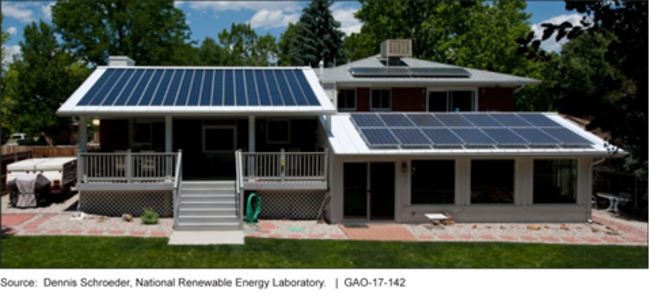
On June 6, US president Joe Biden invoked the Defense Production Act “to accelerate domestic manufacturing of clean energy.” That goal sounds laudable and, for those of us who don’t own stock in oil or coal companies, probably uncontroversial. But once we start focusing on the details, Biden’s order turns out to be just another crony capitalist boondoggle that’s more likely to increase prices and slow adoption than the other way around.
Let’s start with the situation as it is, according to the Department of Energy’s press release:
“Demand for clean energy technologies such as solar panels, heat pumps, and electrolyzers for hydrogen has increased significantly as the costs of these technologies have plummeted over the last decade.”
In other words, “things are GREAT! Everyone’s adopting these new technologies and it’s getting cheaper and cheaper to do so!”
With the situation well in hand, what’s the purpose of Biden’s order?
Here’s the first clue: “Unless the U.S. expands new manufacturing, processing, and installation capacity, we will be forced to continue to rely on clean energy imports …”
And here’s the second:
“DPA authority, with the necessary funding appropriated by Congress, will allow the federal government to invest in companies that can build clean energy facilities, expand clean energy manufacturing, process clean energy components, and install clean energy technologies for consumers.”
The goal of the order isn’t to “drive down energy costs for American consumers.”
It’s to artificially advantage American companies over those conniving foreigners who can profitably sell solar panels, heat pumps, etc. to American consumers at lower prices than American manufacturers can.
It’s central planning’s age-old black box: Your tax dollars are fed into one end; higher prices for the things you want and need come out the other.
If this idea doesn’t sound like a win for you, that’s because it isn’t.
All the DoE blather about “supply chain vulnerabilities,” “job opportunities,” “climate change,” and “national security” is just cover for a standard issue corporate welfare program.
You’ll pay more to convert your home to rooftop solar or replace your old gas furnace with a heat pump, and whichever American companies hire the most effective lobbyists will pocket the difference.
If Biden was serious about spurring adoption of clean energy, he’d take a meat ax to tariffs and restrictions on importing the relevant goods. Instead, he’s just writing welfare checks to Big Business and handing you a “Green” Raw Deal.
Thomas L. Knapp (Twitter: @thomaslknapp) is director and senior news analyst at the William Lloyd Garrison Center for Libertarian Advocacy Journalism (thegarrisoncenter.org). He lives and works in north central Florida.
PUBLICATION/CITATION HISTORY


